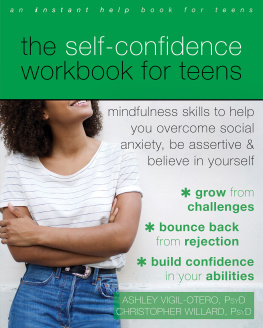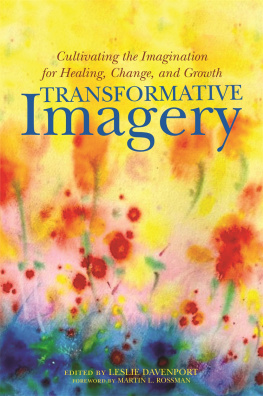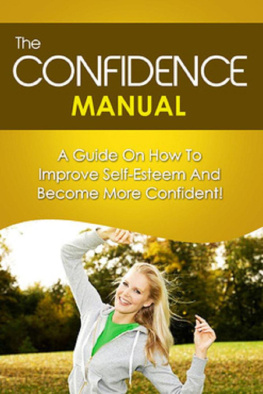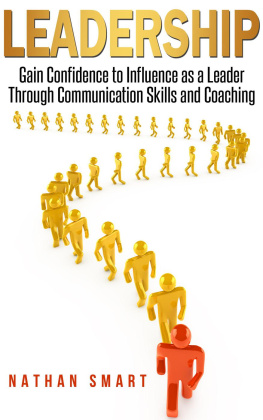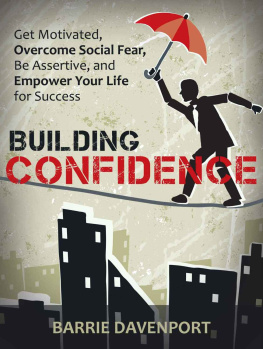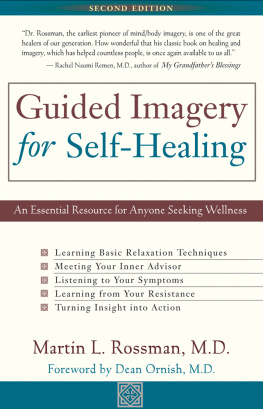Id like to extend my deepest appreciation to the staff of New Harbinger Publications, who have supported this book from the time it was but a faint image in my mind. In particular, I thank Matthew McKay, Ph.D., Tesilya Hanauer, Heather Mitchener, Carole Honeychurch, and Karen ODonnell Stein. Their vision, expertise, and encouragement have been invaluable. I couldnt have done it without them.
Thanks go to my teachers and mentors, Jeanne Achterberg, Ph.D.; David Bresler, Ph.D.; Stanley Krippner, Ph.D.; David Lukoff, Ph.D.; Martin Rossman, MD; Ilene Serlin, Ph.D.; Dennis Jaffe, Ph.D.; and all my colleagues at Saybrook Graduate School and Research Center in San Francisco. I am fortunate to have learned from their vast knowledge and am grateful for their guidance. In addition, special thanks go to my colleagues at the University of California, Irvine, particularly Gary Matkin, Ph.D., dean, and Jane Welgan, Ed.D., associate dean, for their steadfast support.
Id like to thank my family for their continued patience over the years. Im sure my parents, C. K. and Ruth, and my sisters, Patricia and Carolyn, never imagined that an early childhood event would have such a profound effect on and lasting motivation for my growth. I thank them for their love. Finally, Id like to thank my partner, Kirk Snyder, an accomplished professional writer in his own right, who offered a treasure trove of advice and encouragement.
stop self-doubt from stopping you cold
Only as high as I reach can I grow, only as far as I seek can I go, only as deep as I look can I see, only as much as I dream can I be.
Karen Ravn
Before you can move directly to learning guided imagery techniques to banish self-doubt from your life, lets start with a simple quiz. No need for test anxiety here; this is just a way to identify your starting point. The results of this quiz will be very helpful to you as you progress in this book.
Self-Confidence Quiz
Read through the following twenty questions and let yourself respond naturally and quickly. Try not to think about the questions too much. Instead, go with your initial response, which is always the most accurate. Answer each question using a scale of 1 to 5, with 1 meaning rarely, 2 meaning occasionally, 3 meaning about half of the time, 4 meaning often, and 5 meaning almost all of the time.
I enjoy taking risks and regularly do so. ___________
I believe I can do anything I put my mind to. ___________
I seek out new challenges. ___________
Im okay if my performance is not perfect all the time. ___________
I know myself well: strengths, weaknesses, talents, skills, and priorities. ___________
Im the person Ive always wanted to be. ___________
Im comfortable with my actions and dont get embarrassed. ___________
I thrive on change. ___________
I have the power to make my dreams come true. ___________
I always feel self-confident. ___________
The past is over and I quickly let go of old hurts. ___________
I do what I feel is right and dont worry about what other people will think. ___________
I sleep well and dont wake up at night replaying events in my head. ___________
I love trying new things and dont care if I look foolish. ___________
Im just fine the way I am. ___________
I feel okay when I say no. ___________
I feel poised and in control when Im in new situations. ___________
The best is yet to be. ___________
I take good care of myself: I eat a healthy diet, exercise, monitor my stress level, and get enough sleep. ___________
I trust myself to say and do the right things. ___________
Scoring Your Self-Confidence Quiz
Now, add up all your points to determine your total score. Write your score below.
Total score: ___________
Score of 30 to 59: Congratulations on picking up this book! Your confidence level is low and youll find many useful tools as we continue.
Score of 60 to 69: You have average confidence already, but it could use some improvement. Keep reading!
Score of 70 to 100: You have strong confidence! But keep reading. This book can help you become even more dynamic.
Visualization and Guided Imagery for Self-Confidence
Its estimated that more than one hundred thousand thoughts and/or images flash through the average persons mind every day. At least half of these thoughts may be self-doubting, negative, or anxiety producing. Experiencing these negative thoughts robs you of the thrill of exploring, discovering new things, meeting new people, and visiting new places. Youre left feeling overwhelmed and unable to handle whatever is in front of you. If unchecked, this steady diet of self-doubt, worry, and anxiety affects the very core of who you are: your perceptions of the world, your beliefs about yourself, your moods, and your very health.
Visualization: A Natural Process
Visualization is a natural process that allows you to see pictures in your mind. Visualization is as easy as closing your eyes, imagining youre sitting in a movie theater, and watching the scenes of your life play out on the screen. The pictures you see in your mind can depict actual things in your waking life or things not actually presentin other words, things you want to take place.
Thousands of years ago, early humans painted pictures of the animals they were hunting on the walls of their cave homes. These primitive people might have sat with these paintings, performed small rituals, and allowed the feelings evoked by the paintings to wash over them. They were then able to walk out of their caves full of the confidence and strength necessary for successful hunting. The act of creating the pictures and focusing on them in their minds eye must have empowered them in amazing and seemingly mystical ways.
Many people, however, dont see these types of pictures in their heads. Research studies tell us that 25 percent of the population do not see things in their minds, but they use other senses in imagery quite effectively (Achterberg, Dossey, and Kolkmeier 1994, 38). For these people, guided imagery is the perfect means to tap into the power of their minds eye to create positive change.
Guided Imagery: Using All Your Senses
Guided imagery is a natural mental thought process that uses sensory information in an unforced, free-flowing way. Actors, athletes, and businesspeople all use mental imagery rehearsals to envision successful performances or to set goals. To use this internally driven technique, you simply close your eyes, take a few deep relaxing breaths, and follow a script to imagine your desired goals. Usually the script is read out loud by a trained therapist in person, but an audio recording can also be used. The use of a script is what makes this technique guided. With this technique, you have the opportunity to tap into multiple senses and multiple ways of knowing. Your senses will help you feel, on a deep, meaningful level, the self-confidence youve always wanted. Using guided imagery, you can see, hear, smell, taste, and fully sense with your body the feeling you are seeking.


